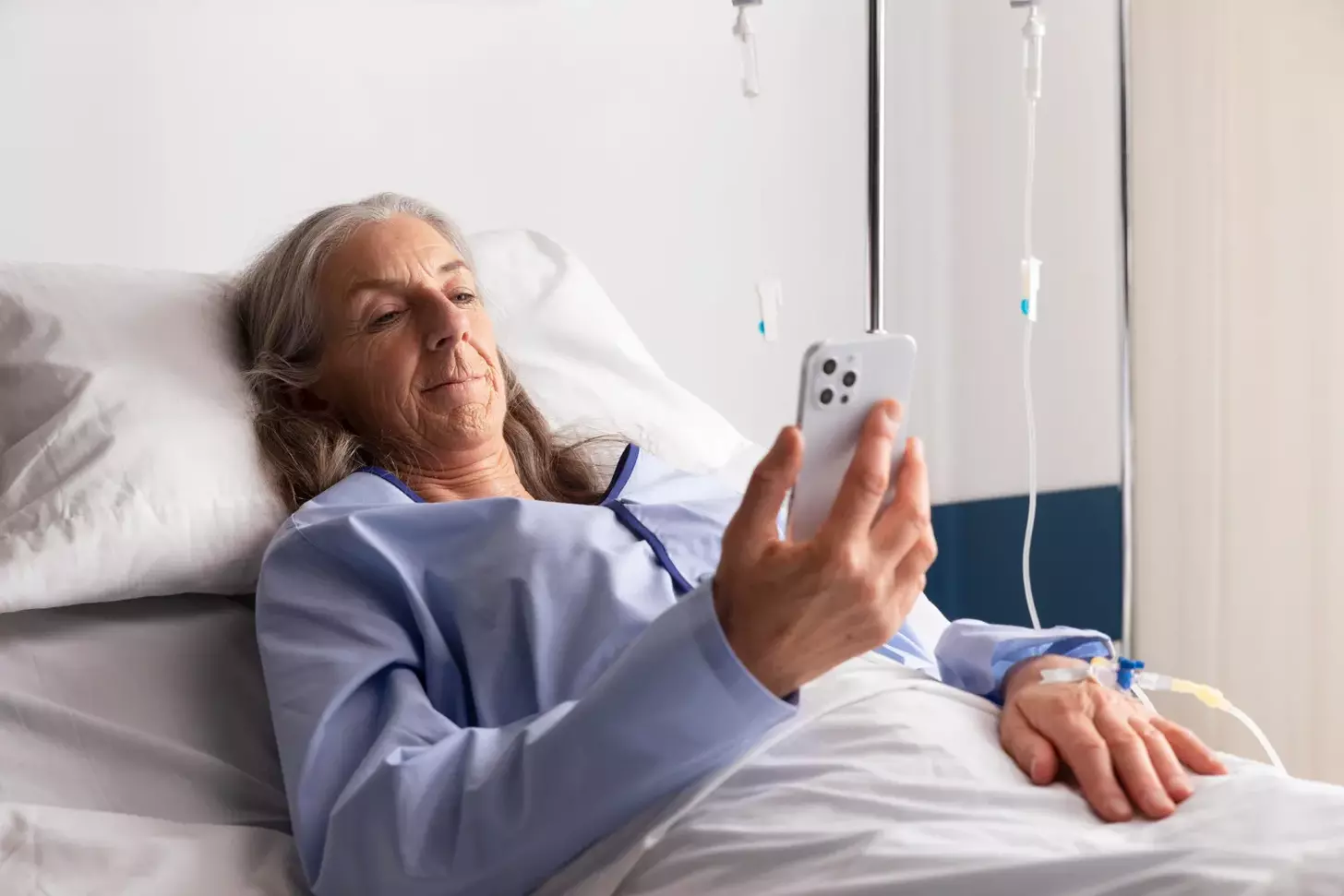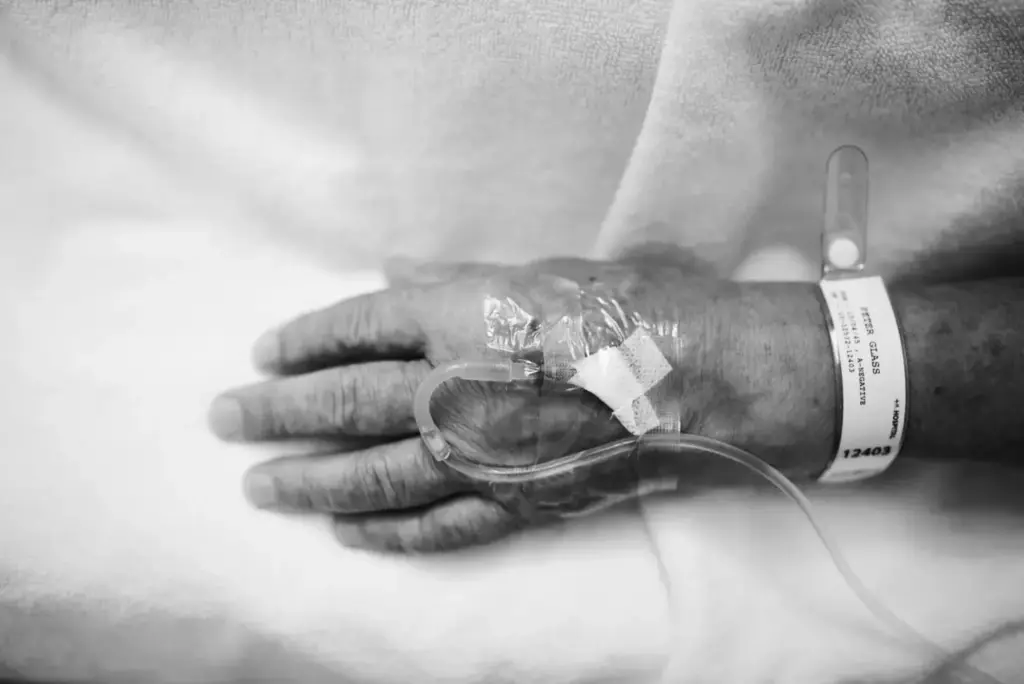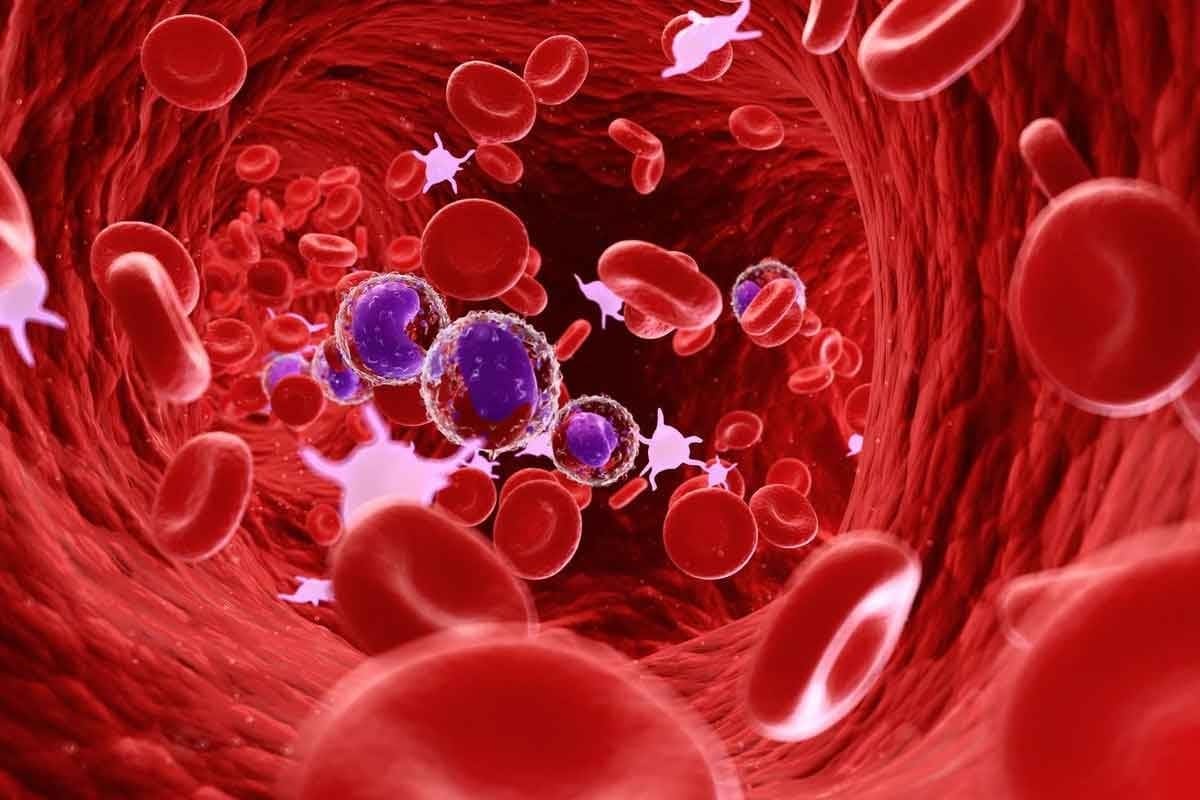Last Updated on November 26, 2025 by Bilal Hasdemir

Starting chemotherapy for non-Hodgkin’s lymphoma (NHL) can feel scary. But knowing what to expect can make it less overwhelming. It helps patients feel more in control as they work towards getting better.
At Liv Hospital, we focus on our patients first. We make sure our international patients get top-notch care for NHL. Our methods are based on the newest medical discoveries and are customized for each person’s needs.
Chemotherapy is a key part of treating NHL. There are different treatments based on how serious the disease is. Doctors often use R-CHOP and CVP. These plans are made just for you to fight the disease.
Key Takeaways
- Chemotherapy is a critical component of NHL treatment.
- Various chemotherapy regimens are available, including R-CHOP and CVP.
- Understanding the treatment process can help patients prepare for their journey.
- Liv Hospital provides patient-centered care and international standards for NHL treatment.
- Personalized treatment plans are tailored to meet the unique needs of each patient.
Understanding Non-Hodgkin’s Lymphoma and Treatment Needs
Non-Hodgkin’s lymphoma (NHL) is a wide range of lymphomas. Each type has its own traits and treatment needs. Knowing the specific NHL type is key to finding the right treatment.
Types of NHL and Their Characteristics
NHL is split into several subtypes. These are based on the lymphocyte type and how fast the disease grows. The main types are:
- Indolent NHL: These lymphomas grow slowly. They might not need treatment right away but need watching closely.
- Aggressive NHL: These grow fast and need quick, intense treatment.
Some common NHL types are follicular lymphoma, diffuse large B-cell lymphoma (DLBCL), and marginal zone lymphoma. Each type has its own biology and treatment response.
Why Chemotherapy Is Often Necessary
Chemotherapy is key for many NHL types, mainly aggressive ones or those that spread. It targets fast-growing cancer cells, slowing the disease.
Dactinomycin is a chemotherapy drug that stops cancer cells from growing. It works by blocking RNA and DNA needed for cell survival. Chemotherapy for NHL is given in cycles, lasting weeks to months.
Choosing chemotherapy depends on the NHL type, stage, and patient health. Healthcare providers tailor treatments based on these factors. This might include chemotherapy as a main part of the plan.
Common Chemo for NHL Regimens and Protocols
Chemotherapy for NHL uses different regimens. The choice depends on the disease type and how severe it is. We aim to make these options clear for you.
R-CHOP: The Standard Treatment Approach
R-CHOP is a common chemotherapy for NHL. It combines Rituximab with Cyclophosphamide, Hydroxydaunorubicin (Doxorubicin), Oncovin (Vincristine), and Prednisone. This mix is effective for many NHL types.
Key Components of R-CHOP:
- Rituximab: Targets CD20-positive B cells
- Cyclophosphamide: Damages DNA to prevent cancer cell replication
- Doxorubicin: Intercalates DNA strands, inhibiting cancer cell growth
- Vincristine: Disrupts microtubule formation, causing cell cycle arrest
- Prednisone: A corticosteroid that helps kill cancer cells
CVP and Other Alternative Regimens
While R-CHOP is common, CVP is used for those who can’t handle more intense treatments. CVP is good for certain NHL subtypes or those with health issues.
| Regimen | Components | Typical Use |
|---|---|---|
| R-CHOP | Rituximab, Cyclophosphamide, Doxorubicin, Vincristine, Prednisone | First-line treatment for many NHL subtypes |
| CVP | Cyclophosphamide, Vincristine, Prednisone | Alternative for patients who cannot tolerate anthracyclines |
How Doctors Choose the Right Protocol
Choosing the right chemotherapy depends on many factors. These include the patient’s health, disease characteristics, and past treatments. Our team works closely with patients to find the best treatment plan.
New treatments, like those from Roche, are improving NHL care. We stay updated to offer the best care possible.
Chemotherapy Drugs Used in Lymphoma Treatment
In the fight against lymphoma, chemotherapy drugs are used to destroy cancerous cells and promote recovery. Chemotherapy for lymphoma involves a combination of powerful drugs to combat cancer cells effectively.
Cyclophosphamide and Doxorubicin
Cyclophosphamide and doxorubicin are two common chemotherapy drugs for Non-Hodgkin’s Lymphoma (NHL). Cyclophosphamide stops cancer cells from reproducing by messing with their DNA. Doxorubicin is an antibiotic that stops cancer cells from growing by getting into their DNA.
These drugs are often mixed with others to work better. For example, in the R-CHOP regimen, they are combined with rituximab, vincristine, and prednisone.
Vincristine and Prednisone
Vincristine is a vinca alkaloid that stops cancer cells from dividing by messing with their microtubules. It’s given intravenously and targets fast-growing cells.
Prednisone is a corticosteroid used in many treatments, including NHL. It reduces inflammation and kills lymphoma cells. Prednisone is taken orally and is key in many chemotherapy plans.
Other Medications in NHL Treatment
Other chemotherapy drugs are used based on the NHL type and treatment plan. For example, dactinomycin is used to treat various cancers, including its side effects.
The choice of chemotherapy drugs and the regimen used greatly affects treatment success. Our healthcare team carefully picks the best chemotherapy protocol for each patient.
Preparing for Lymphoma Chemotherapy
Lymphoma chemotherapy needs careful planning. This includes medical tests, making practical arrangements, and getting emotional support. We’ll guide you through these steps to prepare for NHL treatment options.
Medical Tests and Evaluations
Before starting chemotherapy, we check your health with various tests. These might include:
- Blood tests to check your blood cell count and liver function
- Imaging tests, such as CT scans or PET scans, to assess the extent of the lymphoma
- Heart function tests, like echocardiograms, to ensure your heart can withstand the treatment
These tests help us tailor the treatment to your specific needs. They also help us monitor any side effects. For example, patients on dactinomycin should know about possible side effects like low white blood cell count and liver toxicity.
Practical Preparations for Treatment
Practical preparations are key for a smooth treatment process. We suggest:
- Arranging for transportation to and from treatment sessions
- Preparing a bag with essentials, such as comfortable clothing, snacks, and entertainment, for treatment days
- Making arrangements for childcare or pet care, if needed
By focusing on these practical aspects, you can better handle your treatment and recovery. Keeping a journal or log is also helpful. It can track your treatment schedule, side effects, and any questions for your healthcare team.
Building Your Support System
Having a strong support system is essential for emotional and psychological well-being during lymphoma chemo treatment. We recommend:
- Reach out to family and friends for support
- Consider joining a support group for patients undergoing similar treatments
- Discuss your feelings and concerns with your healthcare team
A robust support system can greatly impact your treatment journey. We’re here to support you every step of the way. We provide guidance and care to help you through the challenges of lymphoma chemotherapy.
The NHL Chemotherapy Process: What to Expect
Knowing about NHL chemotherapy is key for patients. It’s given in cycles, lasting weeks to months. This lets the body fight cancer cells and then rest.
During Infusion: The Actual Procedure
Chemotherapy drugs, like dactinomycin, are given through an IV. Doctors pick the right dose based on the patient’s size and cancer type. During treatment, doctors watch for side effects and adjust as needed.
Key aspects of the infusion process include:
- Insertion of an intravenous line for drug administration
- Monitoring of vital signs and overall health during treatment
- Management of any side effects or reactions
Between Cycles: Recovery and Monitoring
After each cycle, patients recover and get checked. This time is key for seeing how treatment is working and handling side effects. Regular visits and tests help doctors tweak the plan if needed.
Monitoring during this phase may include:
- Blood tests to check for changes in blood cell counts
- Imaging tests to see how cancer is responding
- Physical exams to check overall health
Typical Treatment Settings and Environments
Chemotherapy for NHL can happen in clinics, hospitals, or cancer centers. Where it happens depends on the patient’s health, treatment needs, and what they prefer.
Factors influencing the treatment setting include:
| Setting | Characteristics |
|---|---|
| Outpatient Clinics | Good for those with simpler treatments |
| Hospitals | Best for serious cases or those needing close watch |
| Specialized Cancer Centers | Offer full care and access to new treatments |
How Long Is Chemotherapy for Lymphoma?
Knowing how long chemotherapy for lymphoma lasts is key for patients. It usually takes several weeks to months to finish the treatment.
Typical Treatment Duration and Cycles
Chemotherapy for lymphoma is given in cycles. Each cycle is followed by a break. The number and length of cycles depend on the treatment plan and how well the patient responds.
Most patients get 4 to 6 cycles of chemotherapy. Each cycle can last 2 to 4 weeks. For example, the R-CHOP regimen, used for Non-Hodgkin’s Lymphoma (NHL), is given every 21 days.
Factors That May Extend or Shorten Treatment
Several things can change how long chemotherapy lasts for lymphoma. These include:
- The type and stage of lymphoma
- The patient’s overall health and how well they respond to treatment
- Any other health issues or complications
- The specific chemotherapy regimen used
As one expert says,
“The key to successful treatment is tailoring the chemotherapy regimen to the individual patient’s needs and response.”
Follow-up Care After Completing Chemotherapy
After finishing chemotherapy, it’s important to keep up with follow-up care. This helps watch for any signs of the cancer coming back and manage any lasting side effects. This care includes:
- Regular check-ups with the healthcare team
- Imaging tests like CT scans or PET scans
- Blood tests to check blood counts and other health markers
We stress the importance of follow-up care. It’s a big part of making sure the treatment works well in the long run.
Common Side Effects of NHL Chemotherapy
It’s important for patients with NHL to know about chemotherapy side effects. Chemotherapy is a key part of treating Non-Hodgkin’s Lymphoma (NHL). It can cause a range of side effects, from mild to severe.
Short-term Side Effects
Short-term side effects include fatigue, nausea, and vomiting. These happen because chemotherapy affects not just cancer cells but also other fast-growing cells in the body. For example, chemotherapy can upset the digestive system, causing nausea and changes in appetite.
Some people may also get mouth sores or changes in taste. This can make eating and drinking hard. It’s key to manage these side effects to keep the patient’s quality of life up during treatment.
Hair Loss and Skin Changes
Hair loss, or alopecia, is a common side effect of many NHL chemotherapy regimens. The amount of hair loss varies with the drugs and doses used. While it can be tough emotionally, hair usually grows back after treatment ends.
Skin changes are also possible, with some patients getting dryness, sensitivity, or rashes. These can be managed with good skin care and protective measures.
Blood Count Reductions and Infection Risk
Chemotherapy can lower blood counts, including neutropenia (low white blood cell count), anemia (low red blood cell count), and thrombocytopenia (low platelet count). Neutropenia raises the risk of infections. It’s vital for patients to take steps to prevent infections and seek help if they show signs of infection, like fever or chills.
| Side Effect | Description | Management Tips |
|---|---|---|
| Fatigue | Feeling extremely tired or weak | Rest when needed, maintain a balanced diet |
| Nausea and Vomiting | Feeling queasy or vomiting | Use anti-nausea medication, eat small, frequent meals |
| Hair Loss | Losing hair on the head or body | Use gentle hair care products, consider wigs or headscarves |
| Neutropenia | Low white blood cell count, increasing infection risk | Practice good hygiene, avoid close contact with sick individuals |
While NHL chemotherapy side effects can be tough, most are temporary and go away after treatment ends.
Managing Chemo Side Effects Effectively
Managing chemotherapy side effects can greatly improve NHL patients’ quality of life. We know that fighting Non-Hodgkin’s Lymphoma with chemo is tough. But, with the right strategies, many side effects can be lessened.
Medications to Reduce Symptoms
Many medications can help with chemotherapy side effects. Anti-nausea drugs are used to fight nausea and vomiting. We also give meds to boost blood cell production, lowering infection and anemia risks.
It’s key to work with your healthcare team to find the best meds for you. This way, we can lessen side effect discomfort and make treatment more bearable.
Lifestyle Adjustments During Treatment
Changing your lifestyle can also help manage side effects. Eating a healthy diet is vital for your body during treatment. Drinking lots of water and doing gentle exercises help keep you strong and mobile.
Getting enough rest and avoiding too much activity is also important. By pacing yourself and taking breaks, you can save energy and fight fatigue. We help you create a plan that fits your needs and limits.
When to Contact Your Healthcare Team
It’s vital to know when to call your healthcare team. If you have severe side effects like high fever, severe pain, or trouble breathing, call them right away.
We also want you to tell us about any changes in your health, no matter how small. Early action can make a big difference. Together, we can tackle concerns quickly and adjust your treatment as needed.
New targeted therapies might offer better ways to reduce side effects and improve NHL treatment results. We’re always learning about these new options to give you the best care.
Emotional and Psychological Aspects of Lymphoma Treatment
Lymphoma diagnosis and treatment deeply affect a patient’s emotional and psychological health. The journey through Non-Hodgkin’s Lymphoma (NHL) treatment is as much an emotional challenge as it is a physical one.
Coping with Diagnosis and Treatment
Coping with a lymphoma diagnosis means coming to terms with the condition and its treatment. Patients often feel a mix of emotions, from shock and denial to anxiety and fear. It’s essential to acknowledge these feelings and seek support when needed.
We recommend that patients explore various coping strategies, such as:
- Meditation and relaxation techniques
- Support groups, either in-person or online
- Counseling or therapy sessions
- Engaging in hobbies or activities that bring comfort and joy
Resources for Emotional Support
Having a strong support system is key during lymphoma treatment. Resources for emotional support include family, friends, support groups, and professional counseling.
We encourage patients to:
- Reach out to loved ones for emotional support
- Join a lymphoma support group to connect with others who are going through similar experiences
- Consider professional counseling to address specific emotional or psychological challenges
Communicating with Family and Friends
Effective communication with family and friends is vital for building a strong support network. Patients should feel encouraged to share their feelings, needs, and concerns with their loved ones.
We suggest that patients and their families:
- Have open and honest discussions about the diagnosis and treatment
- Set clear expectations for how they can be supported during this time
- Encourage family and friends to ask questions and express their feelings as well
By addressing the emotional and psychological aspects of lymphoma treatment, patients can better navigate their NHL treatment journey and improve their overall well-being.
Effectiveness of Chemo for Lymphoma Cancer
Chemotherapy is a key treatment for Non-Hodgkin’s Lymphoma (NHL). It offers hope to many. The journey through chemotherapy is tough but filled with medical progress and personal strength.
Remission Rates and What They Mean
Remission rates show how well chemotherapy works for lymphoma cancer. Remission means no cancer is found in the body. It can be complete or partial.
- Complete Remission: All cancer is gone.
- Partial Remission: Cancer is much less but not all gone.
Modern treatments like R-CHOP help many patients reach complete remission. The chance of remission varies based on the lymphoma type and stage at diagnosis.
Factors Affecting Treatment Success
Many things affect how well chemotherapy works for NHL. These include:
- Stage and Type of Lymphoma: Early diagnosis is better.
- Patient’s Overall Health: Healthier patients do better.
- Response to Initial Treatment: A good start is a good sign.
Every patient’s path is different. Treatment plans are made just for them. New treatments like targeted therapies are making things better.
What Happens If Initial Treatment Isn’t Sufficient
If the first treatment doesn’t work, there are other options. These include:
- Second-line Chemotherapy: New drugs might be tried.
- Stem Cell Transplantation: This can be a good choice in some cases.
- Clinical Trials: New treatments are tested here.
We aim to give full care and support during treatment. We want to help patients get the best results.
Conclusion: Navigating Your NHL Treatment Journey
Understanding NHL treatment is key. It includes knowing the process, managing side effects, and staying updated on cancer care. We know lymphoma chemotherapy can be tough. But with the right info and support, patients can make good choices and get the best results.
Today, patients have more treatment options than ever. Managing NHL chemotherapy means understanding different treatments and their side effects. Working with their healthcare team, patients can create a treatment plan that fits their needs.
We urge patients to be proactive and ask questions during their NHL treatment. This way, they can handle the challenges of NHL chemotherapy and live better. Our aim is to offer top-notch healthcare and support to international patients. We’re dedicated to helping patients get the best results.
FAQ
What is Non-Hodgkin’s lymphoma (NHL), and how is it treated?
Non-Hodgkin’s lymphoma (NHL) is a group of lymphoma types. Some NHL types are aggressive and need chemotherapy. Knowing the NHL type helps choose the right treatment.
What is R-CHOP, and is it a standard treatment for NHL?
R-CHOP is a common chemotherapy for NHL. It uses several drugs to fight cancer cells. It’s often used for many NHL types.
What are the common chemotherapy drugs used in NHL treatment?
Cyclophosphamide, doxorubicin, vincristine, and prednisone are key drugs in NHL treatment. Other drugs might be used based on the NHL type and treatment plan.
How long does chemotherapy for lymphoma typically last?
Chemotherapy for lymphoma varies in length. It depends on the treatment plan and how well the patient responds. Treatment length can be influenced by side effects and response.
What are the common side effects of NHL chemotherapy?
NHL chemotherapy can cause side effects like fatigue and nausea. It can also lead to hair loss and skin changes. Low blood counts can increase infection risk.
How can I manage chemotherapy side effects effectively?
Managing side effects involves medications, lifestyle changes, and education. Knowing when to seek medical help is key to avoiding complications and improving treatment outcomes.
Can chemotherapy cure Non-Hodgkin’s lymphoma?
Chemotherapy can help achieve remission in lymphoma patients, mainly when started early. Success depends on the disease type, patient health, and treatment response.
What happens if initial chemotherapy treatment isn’t sufficient?
If initial treatment fails, other treatments or therapies might be considered. Patients should work with their healthcare team to find the best next steps.
How can I prepare for lymphoma chemotherapy?
Preparing for chemotherapy includes medical tests and health evaluations. Practical steps like arranging transportation and building a support system can also help.
What kind of support is available for patients undergoing NHL treatment?
Support includes coping strategies, emotional support resources, and communication with loved ones. These help patients deal with the emotional and psychological aspects of treatment.








